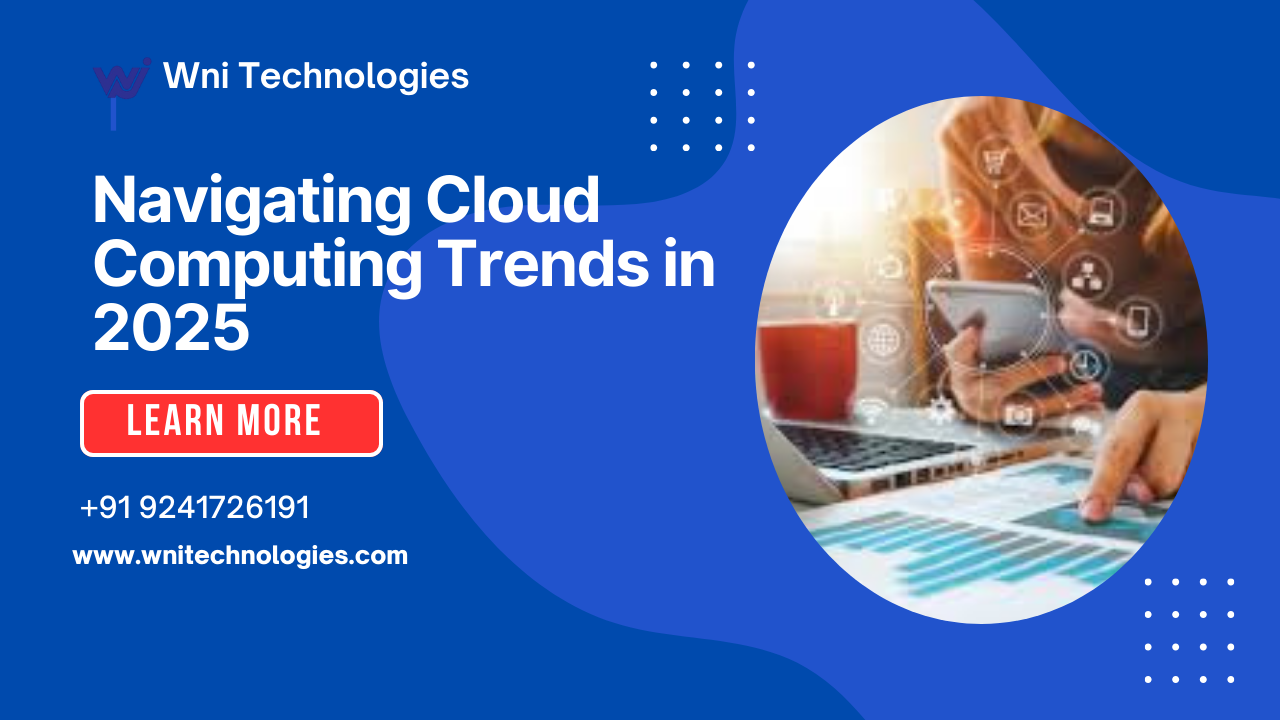
Cloud Computing Trends 2025: Navigating the Future of IT Infrastructure
Introduction
As we move along in 2025, cloud computing remains a foundation of digital transformation. Companies are utilizing cloud technologies to build greater scalability, flexibility, and innovation. In 2025, a number of trends are defining the cloud scene, presenting new opportunities and challenges to organizations globally.
- AI Integration in Cloud Services
Artificial Intelligence (AI) is increasingly becoming a part of cloud platforms. Cloud service providers are introducing AI-based services that help organizations automate tasks, make sense of things, and enhance decision-making. For example, IBM’s ability to integrate third-party AI agents and its Granite AI models provides customers with the capability to build customized AI solutions effectively.
- Growing Edge Computing
Edge computing is picking up, moving computation closer to the data sources. It minimizes latency and bandwidth usage, critical in applications such as IoT and real-time analytics. The marriage of 5G and edge computing is facilitating faster and more stable data processing near the network’s edge.
SoftwareOne
- Emergence of Quantum Computing
Quantum computing is making the transition from theory to practice. Quantum-as-a-Service (QaaS) is now being made available by cloud providers, enabling enterprises to answer tricky questions that classical computers are unable to answer. This access democratization is unleashing new possibilities in research and development.
Medium
- Hybrid and Multi-Cloud Strategies Adoption
Organizations are more and more embracing hybrid and multi-cloud strategies to prevent vendor lock-in, improve resilience, and improve performance. By blending public and private clouds, companies can customize their IT infrastructure for particular purposes, with the assurance of more flexibility and governance.
Visma
- Focus on Sustainability
Sustainability is increasingly emerging as a vital consideration in cloud computing. Vendors are opting for renewable power and efficient cooling systems to make their operations greener. For instance, AWS’s new facilities in Chile will use air and evaporation systems for cooling purposes, reducing the use of water and conforming to renewable energy standards.
Reuters
- Serverless Computing Growth
Serverless computing is making application development easier by abstracting server management. This paradigm enables developers to write code without concerning themselves with infrastructure, resulting in quicker deployment and scalability. Serverless architectures are increasingly becoming common across different industries.
- Improved Cloud Security Measures
As more businesses turn to cloud-based services, security is more important than ever. Cloud providers are putting in place sophisticated security measures, such as zero-trust architectures and AI-based threat detection, to defend applications and data against changing cyber threats.
- Spread of AI-Driven Cloud Tools
Cloud platforms are providing AI-based software that boosts innovation and productivity. The software supports activities like code creation, analysis of data, and automation of customer service, allowing companies to function more effectively and efficiently
- Stepped-Up Investment in Cloud Infrastructure
Large cloud service providers are pouring large amounts of money into growing their infrastructure to keep up with increasing demand. AWS, for example, is investing $4 billion in Chile to open new data centers, a reflection of the worldwide move to improve cloud capabilities and accessibility.
Reuters
- Rise of Alternative Cloud Providers
Aside from the behemoths, other cloud suppliers are finding increasing popularity by virtue of specialized service, aggressive prices, and obedience to local legislations. These include firms like OVHcloud and Scaleway, which offer customized solutions as per particular industries’ needs as well as the requirements of sovereignty of data.
Wikipedia
Conclusion
The cloud computing environment in 2025 is one of high-speed innovation and strategic transformation. Companies that keep pace with these developments and evolve their IT plans accordingly will be well-placed to leverage the maximum benefits of cloud technologies, fostering growth and competitiveness in the digital age.



